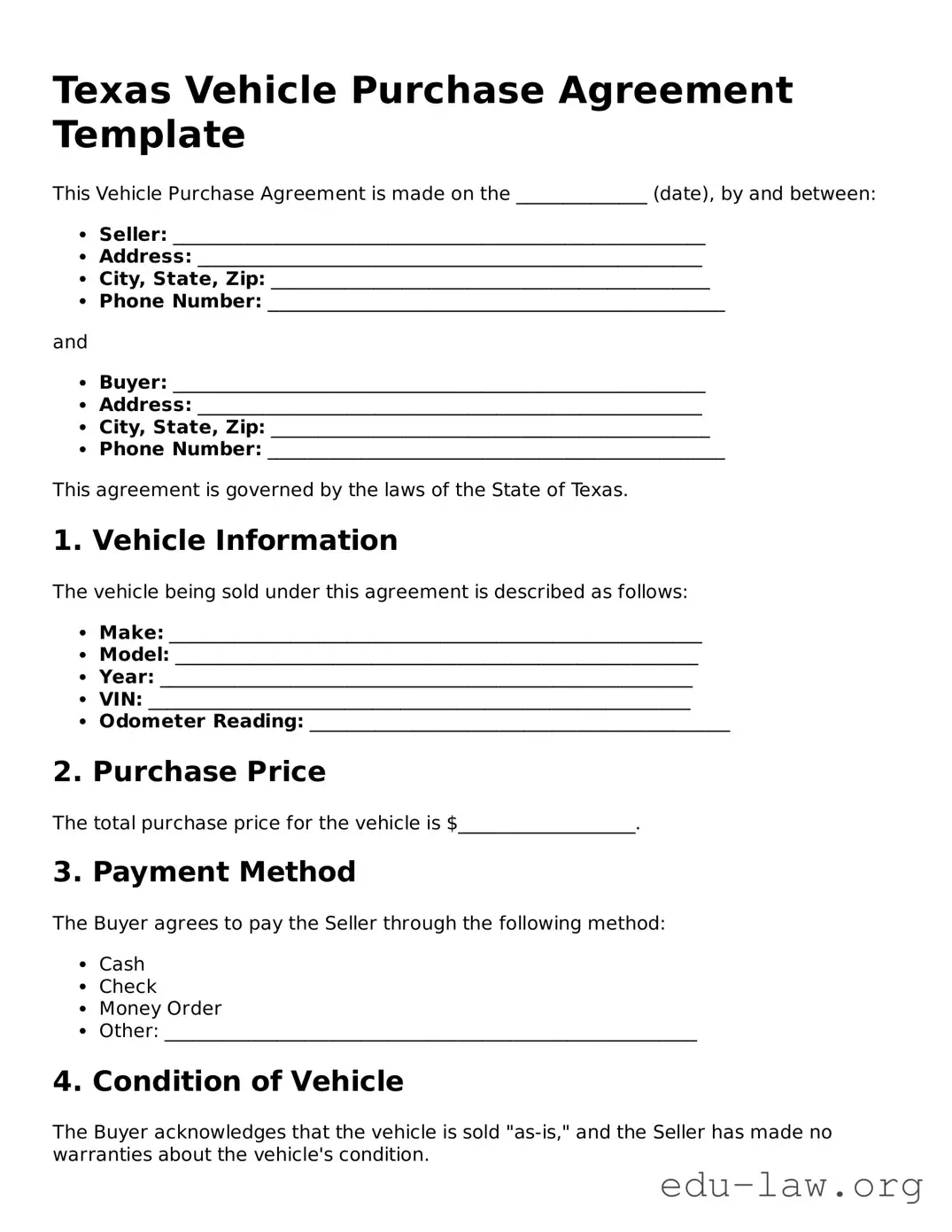What is a Texas Vehicle Purchase Agreement?
The Texas Vehicle Purchase Agreement is a legal document used when buying or selling a vehicle in Texas. It outlines the terms of the sale, including the purchase price, vehicle description, and any warranties. Both the buyer and seller should agree to the terms before proceeding with the sale.
Who needs to use a Vehicle Purchase Agreement?
Anyone involved in the sale or purchase of a vehicle in Texas can benefit from using this agreement. It protects both parties by clearly stating the terms of the sale. Whether you are buying from a dealer or a private seller, having documentation is important.
What information is included in the Agreement?
A Texas Vehicle Purchase Agreement typically includes the names and addresses of both the buyer and seller, the vehicle identification number (VIN), make, model, year, odometer reading, purchase price, and any conditions of the sale. If applicable, it may also list the seller’s warranty or “as-is” statement.
Is the Vehicle Purchase Agreement legally binding?
Yes, once both parties sign the agreement, it becomes legally binding. This means both the buyer and seller are obligated to uphold the terms laid out in the agreement. If either party fails to meet their obligations, legal consequences may arise.
Do I need to have the Agreement notarized?
In Texas, notarization is not a requirement for the Vehicle Purchase Agreement. However, having the document notarized can provide an extra layer of authenticity and protection for both parties involved in the transaction.
Can I modify the Vehicle Purchase Agreement?
Yes, you can modify the agreement to fit your specific needs, as long as both parties mutually agree to any changes. It is a good idea to document all modifications clearly and have both parties sign the updated agreement to avoid misunderstandings.
What should I do after completing the Vehicle Purchase Agreement?
After signing the agreement, both parties should keep a copy for their records. The seller should also provide the buyer with the vehicle title and any additional paperwork required for vehicle registration. This ensures a smooth transfer of ownership.
What if there are disputes after the sale?
If disputes arise after the sale, the Vehicle Purchase Agreement can serve as a reference point for resolving issues. It may help clarify what was agreed upon. If necessary, parties may seek legal counsel to address any disputes based on the terms outlined in the agreement.
Can I find a template for the Vehicle Purchase Agreement?
Yes, templates for the Texas Vehicle Purchase Agreement are widely available online. Using a template can save time and ensure that you include all necessary information. Just be sure to review any template you choose for accuracy and relevance to your specific circumstances.
